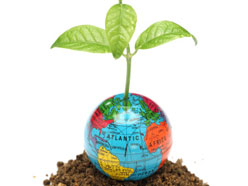
Economies driven by domestic demand and consumption are showing the most growth this year. These include the Philippines, Indonesia and Thailand.
“There is a lot of wage growth, and interest rates are being cut in those countries,” says Stephen Burrows, senior investment manager and product specialist in the emerging equity team for Pictet Asset Management. He also manages the Renaissance Emerging Markets Fund.
As a result, private consumption in these countries is rising dramatically.
Read: Emerging market inflows soar
The Philippines’ GDP growth for Q1 2012 was 6.4%, which compares well with other emerging markets. (China’s growth was 8.1% for the same period.)
Countries like Hungary and the Czech Republic depend on exports to the Eurozone for about 40% of their GDPs, making them vulnerable to that region’s instability.
For emerging markets, on the other hand, Eurozone exports on average constitute only 8.5% of their GDPs, so domestic trade and investment are the most important factors in their growth.
Read: Emerging outpacing developed markets
“There is a general increase in intra-emerging market trade,” says Burrows. “We would estimate that around 55% of exports from emerging-market countries stay within emerging markets. So you’re getting an increasing interdependence between these economies.”
While these three countries continue to see growth, their stocks’ valuations have yet to catch up with stocks from India and China. That means a buying opportunity.
To break in, invest in the banks or the insurance companies, says Burrows.
“If [citizens are] buying more consumer products, they’ll need to insure them. So what may become interesting is the increasing need for financial services, insurance, and credit-card providers.”